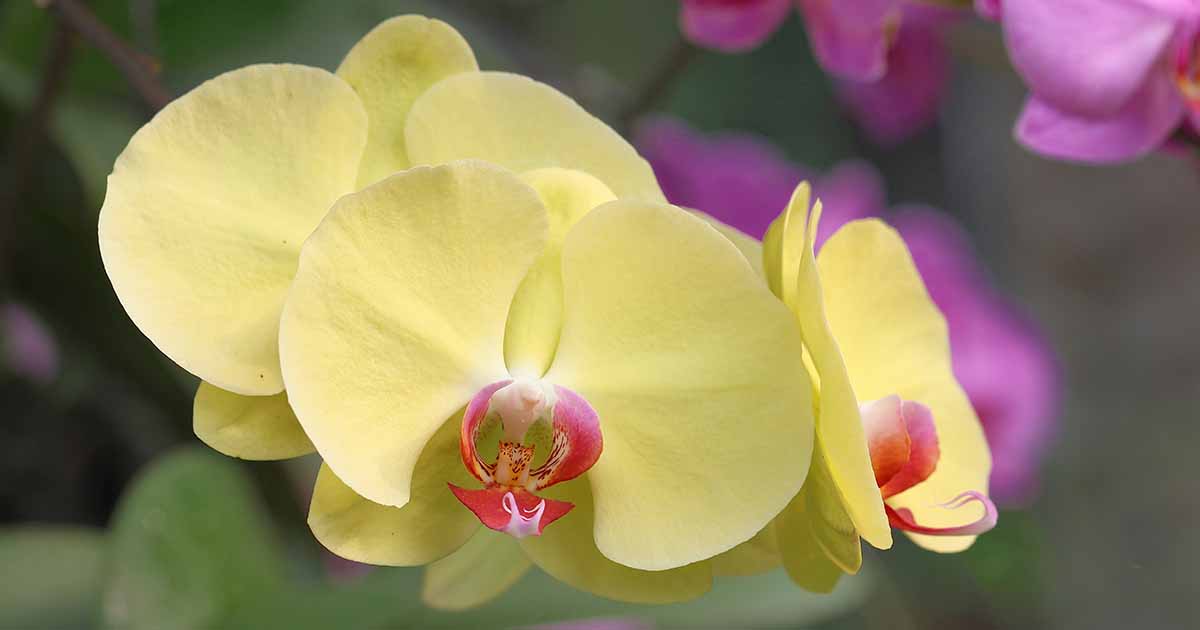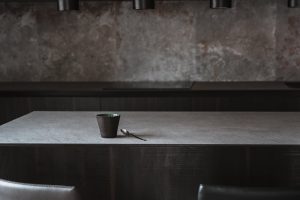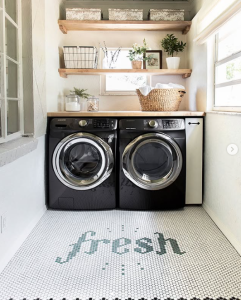
Sometimes orchids can seem more like some kind of alien life form than an extremely common flower.
Many species are so unusual in the way they grow and you wouldn’t expect these plants to thrive in just any old pot, would you?
You may have heard that orchids require special containers and it’s true, some types need specific pots that provide the drainage and air circulation that keeps the roots happy.
But not all varieties need special containers, some orchids are perfectly happy in any old houseplant pot!

We link to vendors to help you find relevant products. If you buy from one of our links, we may earn a commission.
In our guide to growing orchids we provide an overview of how to grow these unique plants.
Now we’re going to chat about the difference between the varieties that need special containers and those that don’t, as well as give you a few suggestions depending on the type you have.
Here’s what I’ll cover:
Choosing a Pot for Your Orchid
To understand what kind of pot to use, we need to know how these plants grow in nature.
Let’s discuss that first.
How Orchids Grow
The orchids that we typically grow at home are either epiphytes, which means in their natural habitat they are attached to other plants, or terrestrial – those that grow in the ground.

Within the orchid world, there are also lithophytes, which grow on rocks, and even a few aquatic species, but they are rarely grown as houseplants or in the home garden.
They are typically only found in specialty stores or botanical gardens, and are grown by experienced hobbyists or experts.
That said, some epiphytes can also be lithophytes, but these are generally categorized as epiphytes to make things simple. For example, the ever-popular moth orchid (Phalaenopsis spp.) can grow on trees or on rocks, depending on the species and environment.
Don’t worry about the distinction between the two. Both lithophytes and epiphytes can be grown in the same type of container.
The real difference is between terrestrial and epiphytic types. An epiphyte will need a different type of container than a terrestrial plant.

The type of container you choose will depend entirely on the plant’s growth habit.
If you’re growing terrestrial types, it can be hard to determine which type you have if you aren’t aware of the species. If you don’t know the species, do some research or chat with an expert to see if they can at least help you narrow down the genus.
To learn more about terrestrial orchids, read our guide.
If you bought your orchid at the grocery store and you are unsure what type it is, the chances are high that it’s a Phalaenopsis – an epiphytic type.
Containers for Terrestrial Orchids
Terrestrial types like bamboo (Arundina spp.), calanthe (Calanthe spp.) corduroy (Eulophia spp.), cymbidium, (Cymbidium spp.), slipper (Cypripedium spp.), jewel (Ludisia spp.), nun’s (Phaius spp.), spathoglotti (Spathoglottis spp.), and urn (Bletilla spp.) orchids can all be grown in the same kind of pots you’d use for most houseplants.
That is, a solid pot with at least one drainage hole in the bottom. Adequate drainage is non-negotiable.
Though terrestrial types aren’t as sensitive to overwatering as epiphytic species, they will still suffer from root rot if they become oversaturated.

If you want a decorative container, and it doesn’t have adequate drainage that’s fine. Just put the plant in a pot with good drainage and then put that inside the decorative container.
It doesn’t really matter whether the pot is deep or shallow because the roots will adapt.
That said, many species grow laterally, with a rhizome that spreads sideways just under the surface of the soil as the plant grows. If you want a full, large plant, give it a wide but shallow pot.
It’s important not to pot up your orchid in a container that is too large, as this can quickly lead to root rot. If the pot is too big, the excess soil retains too much water around the roots. Choose something the same size as the existing container or one size up.
If your plant is currently growing in a deep pot and you want to move it to a shallower one, turn the existing pot sideways and compare the depth of the pot to the width of the new one to determine sizing.
The material doesn’t matter. You can use plastic, clay, cement, wood, metal, or whatever you prefer. It just must absolutely have drainage. Again, this is not negotiable.
I really like the 16-inch Crescent Garden Delano round planter available via Amazon for larger terrestrial specimens.
I think the shape complements these plants nicely, and the resin is lightweight at just over two and a half pounds, but sturdy.
Containers for Epiphytes
Most of the orchids you find at grocery stores and big box stores will be epiphytes.
Phalaenopsis, Cattleya, Dendrobium, and Oncidium (syn. Odontoglossum) species are mostly epiphytes, and these are typically the popular ones carried by stores.

These types of orchids need special containers. They require the pot to have lots of holes in the side, not just at the bottom. This helps with drainage and improves air circulation around the roots.
The roots of epiphytic types can’t tolerate any standing water, so they need plenty of air and excellent drainage.
If you’ve ever purchased one at the store, you probably know what the ideal pot looks like.

They are usually made from clear plastic with long slits in the side and bottom. It’s not essential that they are transparent, though it does help you keep an eye on the roots to watch for problems.
These are usually placed inside an outer decorative container.
You don’t need to use a plastic container inside a decorative pot, though. You can purchase ceramic or clay decorative pots with the appropriate holes.
Tell me this hexagon green and cream ceramic pot from rePotme, available at Amazon, isn’t gorgeous. It’s ideal for displaying a beautiful moth orchid.
I actually prefer ceramic or clay pots because I find they dry out quicker than plastic pots set inside another pot.
The downside is that you need to put them into the sink or tub, or outside, when you water because the excess water needs to drain out of the holes.

If you’d like to keep it simple and use a plastic inner pot, you need to find one that is the right size for your chosen decorative outer pot. It should be just a little bit smaller.
The pot should also be about the same size or one size up as the container the plant is currently growing in.
You don’t want to overpot epiphytic types either. They like being a bit root bound and too large of a container promotes overwatering, and from there, it’s a short trip to root rot-ville.
A five- or six-inch pot is probably just right, unless you have an exceptionally large or small specimen.
If that works for you, you can grab a four-pack of five-inch liners from Truedays via Amazon.
When you’ve selected your container, read our guide to repotting orchids to learn more.
Skip the Container
With epiphytes and lithophytes, you can opt to skip the container altogether and mount the plant instead. If you tend to overwater your plants, this is the way to go.

It’s almost impossible to overwater a mounted plant and this method recreates the plant’s natural growing environment more closely than growing in any type of container.
Mounted plants have their roots wrapped in moss and are then affixed to a support.
You can mount a plant on wood, bamboo, cork, clay, or any other natural material that won’t disintegrate in water.
Alternatively, you can also hang the plant in a basket filled with moss as a substrate.
If you live in the right climate for the species, you can even mount the plant on a living tree outdoors.
You can salvage wood or buy something unique and funky at a second-hand store.
You can also buy driftwood pieces in a variety of sizes from Amazon to use for mounting.
Can’t Be Contained
If you’re anything like me, what started as a spur-of-the-moment purchase from the grocery store has rapidly turned into an orchid-growing obsession.
Part of going from fairweather grower to expert is figuring out what kind of container to grow the plants in.

What type of orchid are you growing and how will you pot it up? Let us know in the comments section below!
I hope you now feel confident about how to contain your beautiful plant. If so, we have several other orchid guides that will help you expand your knowledge. Here’s just a sampling:










